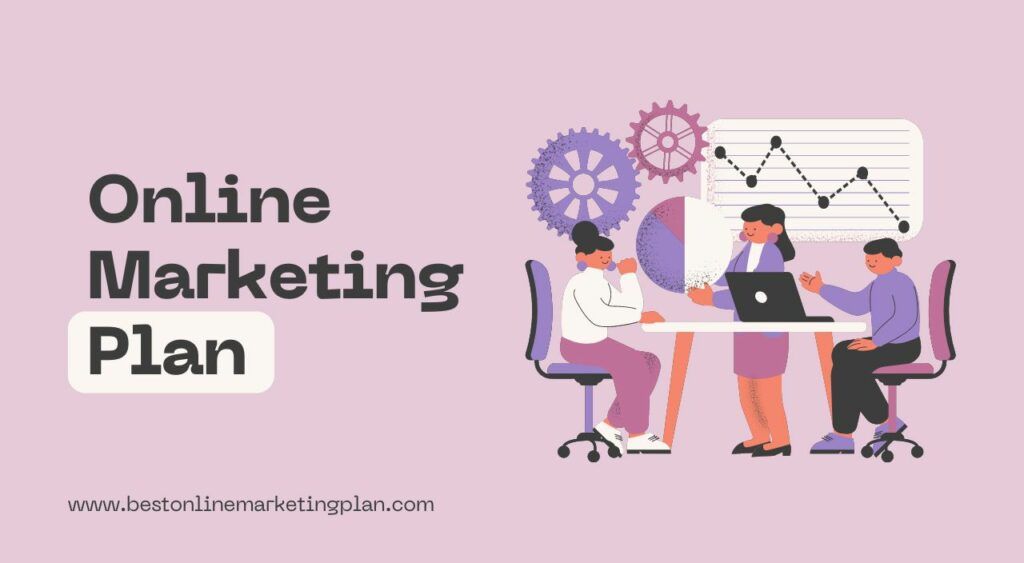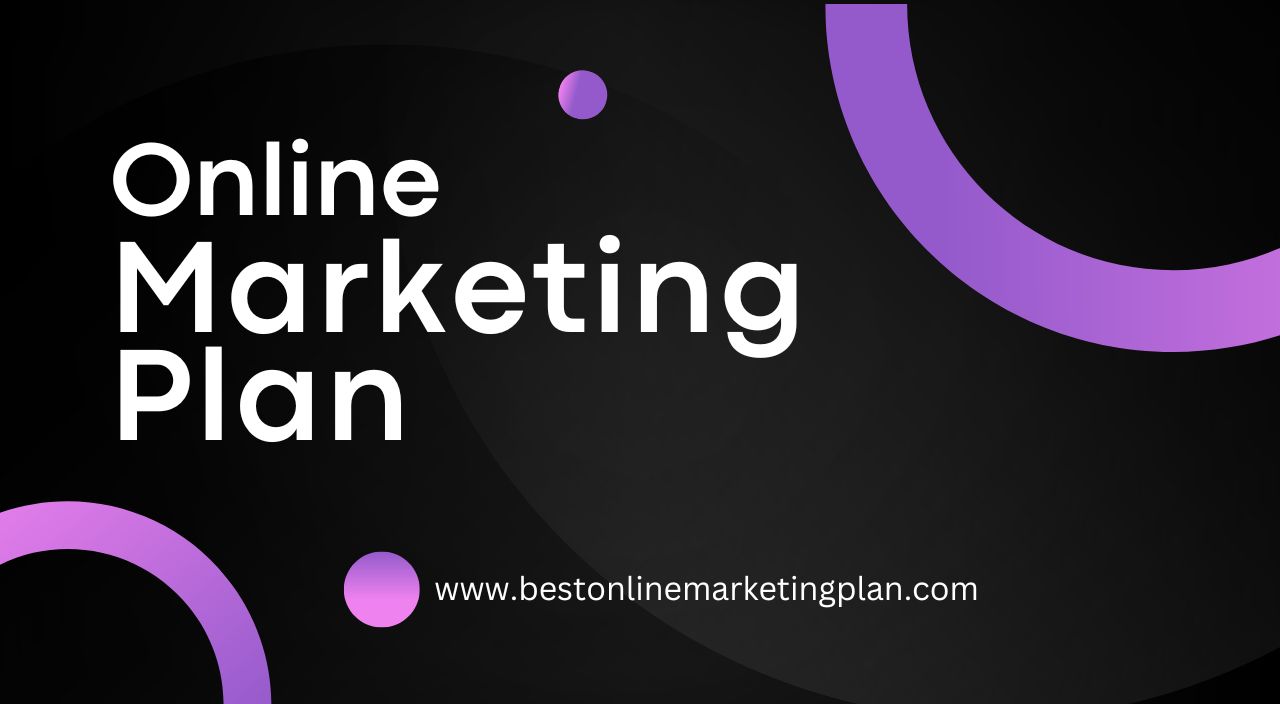Introduction
If you’re diving into the world of online business, you’re probably buzzing with excitement and a million questions. One of the most important things you’ll need is a Foundational Online Marketing Plan. Why, you ask? Well, without a good marketing plan, even the best products can get lost in the vast sea of the internet. In this guide, I’ll walk you through everything you need to know to build a strong online marketing plan. Let’s get started!

How To Make a Good Advertising Plan for Your Online Business?
Understanding Your Target Audience
First things first, who are you trying to reach? Understanding your target audience is the cornerstone of any good advertising plan. Think about their age, interests, location, and buying habits. Create buyer personas—detailed profiles of your ideal customers. This will help you tailor your ads to speak directly to the people who are most likely to buy from you.
Defining Clear Objectives
Next up, what do you want to achieve with your ads? Setting clear, specific objectives is key. Whether it’s increasing brand awareness, driving traffic to your website, or boosting sales, having a clear goal will help you measure your success and stay on track.
Budget Allocation and Management
Money talks! Deciding how much to spend on advertising can be tricky. Start by setting a realistic budget based on your overall marketing plan. Allocate funds across different channels to see what works best. Keep an eye on your spending and be ready to adjust as needed.
Choosing the Right Advertising Channels
Where should you advertise? There are many options—social media, search engines, display ads, and more. Choose channels that your target audience uses the most. For example, if you’re targeting young adults, Instagram and TikTok might be your best bet. If you’re going after professionals, LinkedIn could be the way to go.
Creating Compelling Ad Content
Your ads need to grab attention and drive action. Use eye-catching visuals, clear headlines, and a strong call-to-action (CTA). Make sure your message is clear and compelling. Think about what would make you click on an ad and try to replicate that.
Measuring and Analyzing Ad Performance
Finally, you need to know if your ads are working. Use tools like Google Analytics and Facebook Insights to track performance. Look at metrics like click-through rates (CTR), conversion rates, and return on ad spend (ROAS). Use this data to refine and improve your ads over time.

Here Are Five Steps on How to Make a Good Marketing Strategy for Your Future Online Business:
Step 1: Market Research and Analysis
Start by researching your market. Look at your competitors, understand the trends, and find gaps that you can fill. Tools like Google Trends and SEMrush can help you gather valuable insights. The more you know about your market, the better you can position your business.
Step 2: Defining Your Unique Value Proposition
What makes you different? Your Unique Value Proposition (UVP) is what sets you apart from the competition. It’s the reason customers should choose you over anyone else. Be clear about the benefits you offer and communicate this in all your marketing efforts.
Step 3: Setting SMART Goals
SMART goals are Specific, Measurable, Achievable, Relevant, and Time-bound. For example, instead of saying “I want more sales,” set a goal like “I want to increase sales by 20% in the next three months.” This gives you a clear target to aim for and makes it easier to track your progress.
Step 4: Developing Your Marketing Mix (Product, Price, Place, Promotion)
Your marketing mix is made up of four key elements:
- Product: What are you selling? Make sure your product meets the needs of your target audience.
- Price: How much will you charge? Consider your costs, competitors’ prices, and what your customers are willing to pay.
- Place: Where will you sell your product? This could be online, in physical stores, or both.
- Promotion: How will you promote your product? This includes advertising, PR, social media, and more.
Step 5: Implementing and Monitoring Your Strategy
Put your plan into action and keep a close eye on the results. Use analytics tools to track your performance and be ready to make adjustments as needed. Marketing is an ongoing process, so be prepared to tweak your strategy based on what works and what doesn’t.
Content Marketing Essentials
Crafting Engaging Content
Content is king! Your content should be engaging, informative, and valuable to your audience. This could be blog posts, videos, infographics, or social media posts. The key is to provide value and keep your audience coming back for more.
Content Distribution Channels
How will you get your content out there? Use a mix of channels like your website, social media, email newsletters, and guest blogging. The more places your content appears, the more chances you have to reach your audience.
SEO and Content Optimization
Search Engine Optimization (SEO) is crucial for getting your content seen. Use keywords that your audience is searching for, optimize your headlines and meta descriptions, and make sure your content is mobile-friendly. SEO helps your content rank higher in search results, driving more traffic to your site.
Tracking Content Performance
Use tools like Google Analytics to track how your content is performing. Look at metrics like page views, time on page, and social shares. This data will help you understand what’s working and what’s not, so you can refine your content strategy.
Leveraging Social Media for Business Growth
Choosing the Right Social Platforms
Not all social media platforms are created equal. Choose the ones that best fit your business and where your audience spends their time. Facebook, Instagram, Twitter, LinkedIn, and TikTok each have their strengths and demographics.
Building a Social Media Calendar
Planning is everything. Create a social media calendar to schedule your posts in advance. This helps you stay consistent and ensures you’re regularly engaging with your audience.
Engaging with Your Audience
Social media is a two-way street. Engage with your audience by responding to comments, asking questions, and participating in conversations. The more you engage, the stronger your relationship with your audience will be.
Social Media Advertising
Consider using paid ads on social media to boost your reach. Facebook Ads, Instagram Ads, and LinkedIn Ads can help you target specific audiences and achieve your marketing goals.
Analytics and Adjustments
Use social media analytics tools to track your performance. Look at metrics like engagement rate, follower growth, and click-through rate. Use this data to refine your strategy and make improvements.
Email Marketing Strategies
Building an Email List
Your email list is a valuable asset. Build it by offering something of value in exchange for email addresses, like a free ebook, a discount, or exclusive content.
Crafting Effective Email Campaigns
Your emails should be engaging and relevant. Use catchy subject lines, personalize your messages, and include a clear call-to-action. Make sure your emails provide value to your subscribers.
Personalization and Segmentation
Segment your email list based on factors like interests, purchase history, and engagement level. Personalize your emails to make them more relevant to each segment. This can significantly improve your open and click-through rates.
Measuring Email Campaign Success
Track metrics like open rates, click-through rates, and conversion rates to measure the success of your email campaigns. Use this data to refine your strategy and improve your results.
Search Engine Optimization (SEO) Best Practices
On-Page SEO Techniques
Optimize your website content with keywords, meta tags, and internal links. Ensure your site is mobile-friendly and has a fast loading speed. On-page SEO helps search engines understand your content and rank it higher.
Off-Page SEO Strategies
Build high-quality backlinks from reputable sites. Engage in guest blogging, influencer collaborations, and social media marketing to boost your site’s authority. Off-page SEO helps improve your site’s credibility and ranking.
Technical SEO Considerations
Ensure your website is technically sound. This includes having a clean site structure, using HTTPS, and creating an XML sitemap. Technical SEO ensures search engines can crawl and index your site effectively.
Using Analytics to Refine SEO Efforts
Use tools like Google Analytics and Google Search Console to track your SEO performance. Look at metrics like organic traffic, bounce rate, and keyword rankings. Use this data to make informed decisions and improve your SEO strategy.
Pay-Per-Click (PPC) Advertising
Understanding PPC Basics
PPC advertising involves paying for each click on your ads. It’s a way to drive traffic to your site quickly. Google Ads and Bing Ads are popular PPC platforms.
Keyword Research and Selection
Choose the right keywords for your PPC campaigns. Use tools like Google Keyword Planner to find keywords with a good balance of search volume and competition.
Creating Effective PPC Ads
Your ads should be clear, compelling, and relevant to your keywords. Use strong headlines, concise descriptions, and a clear call-to-action to attract clicks.
Budget Management and Bidding Strategies
Set a budget for your PPC campaigns and decide how much you’re willing to pay per click. Use bidding strategies like manual CPC, automated bidding, or target CPA to optimize your spending.
Analyzing and Optimizing PPC Campaigns
Track your PPC performance using metrics like CTR, conversion rate, and cost per conversion. Use this data to refine your campaigns and improve your ROI.
Affiliate Marketing and Partnerships
Understanding Affiliate Marketing
Affiliate marketing involves partnering with others who promote your products in exchange for a commission. It’s a way to expand your reach and drive sales without upfront costs.
Finding and Recruiting Affiliates
Look for affiliates who align with your brand and have a strong online presence. Reach out to them with a compelling offer and provide the tools they need to promote your products.
Managing Affiliate Relationships
Maintain good relationships with your affiliates by providing support, regular updates, and timely payments. A strong partnership will encourage them to promote your products more effectively.
Measuring Affiliate Performance
Track your affiliates’ performance using metrics like referral traffic, conversion rate, and sales. Use this data to identify your top-performing affiliates and optimize your program.
Analytics and Performance Measurement
Setting Up Analytics Tools
Install analytics tools like Google Analytics on your website to track your marketing performance. These tools provide valuable insights into your audience and how they interact with your site.
Key Metrics to Track
Focus on metrics like traffic, bounce rate, conversion rate, and customer lifetime value. These metrics help you understand how well your marketing efforts are working.
Interpreting Data and Insights
Look for patterns and trends in your data. For example, if you see a high bounce rate on a particular page, it might need improvement. Use data to make informed decisions and refine your strategy.
Using Data to Improve Marketing Efforts
Continuously analyze your data and use it to make adjustments. Marketing is an ongoing process, and using data-driven insights will help you improve your results over time.
Customer Relationship Management (CRM)
Importance of CRM in Marketing
CRM helps you manage and analyze customer interactions and data throughout the customer lifecycle. It’s crucial for building strong relationships and improving customer retention.
Choosing the Right CRM Tools
There are many CRM tools available, like Salesforce, HubSpot, and Zoho. Choose one that fits your business needs and budget. A good CRM tool will help you track customer interactions, sales, and support requests.
Implementing CRM Strategies
Use your CRM to segment your customers, personalize your communications, and automate marketing tasks. CRM strategies help you provide a better customer experience and boost loyalty.
Analyzing Customer Data for Marketing Insights
Use your CRM data to gain insights into customer behavior, preferences, and needs. This information can help you tailor your marketing efforts and create more targeted campaigns.
Conclusion
Building a solid online marketing plan might seem like a big task, but it’s totally doable if you take it step by step. Remember to know your audience, set clear goals, and choose the right channels for your ads. Keep learning and tweaking your strategy as you go along. Marketing is all about staying flexible and finding what works best for you.
Also, don’t forget to look for friends in the right place. Success often comes with the help of people who support you from the very beginning. Make connections both online and offline, but be cautious—there are scammers out there. It’s important to know who you can trust.
For a great place to start, join my hangouts where online marketers support each other for free! No need to pay anything—just sign up and become part of our friendly community. It’s a great way to learn, share, and grow together. Good luck with your marketing journey!

